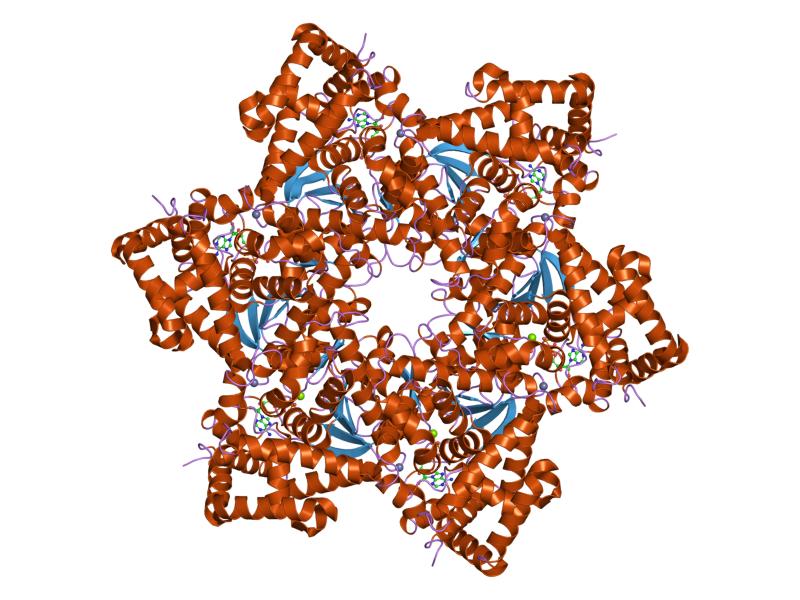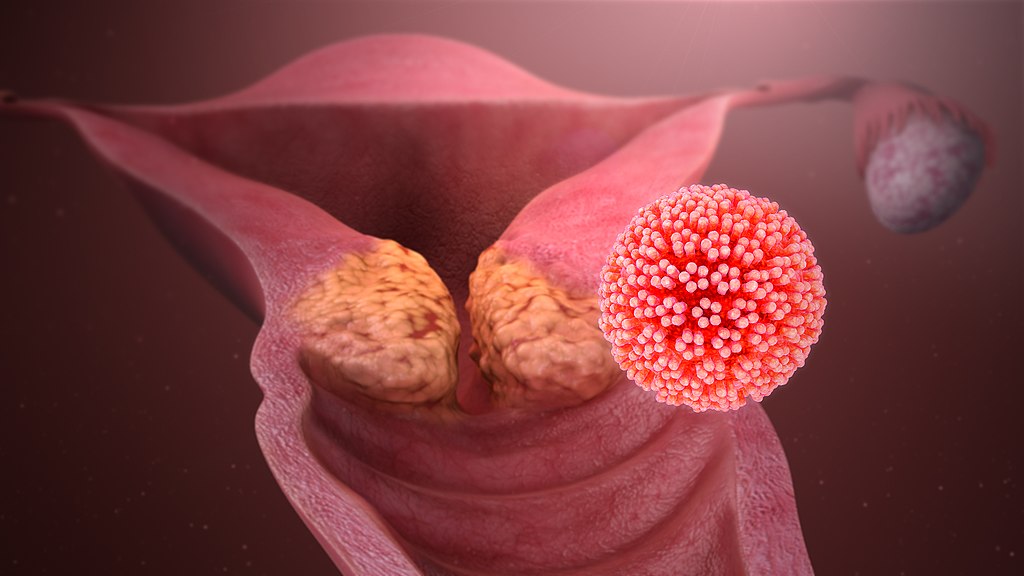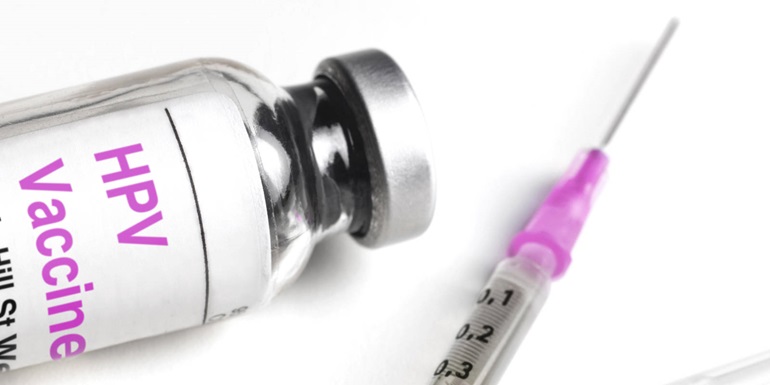HPV is a non-enveloped, double-stranded DNA virus that belongs to the papillomavirus family. Most HPV infections do not cause symptoms and will resolve spontaneously. However, persistent HPV infections will result in warts or precancerous lesions. Some low-risk HPVs (e.g. 2, 7, 22…) are the major causative agents of genital warts, while some high-risk HPVs (e.g. 16, 18, 31, 45…) lead to various cancers such as the cancer of the oropharynx and larynx. Over 200 types of HPV have been identified so far. They are commonly transmitted through any skin-to-skin contact of the genital area, including vaginal, anal, and oral sex, of which vaginal and anal sex is the most common mode of transmission. Occasionally, HPV spread from mother to baby during pregnancy.
 Fig. 1 Papillomavirus large T antigen helicase domain.
Fig. 1 Papillomavirus large T antigen helicase domain.
 Fig. 2 Cervical cancer caused by HPV.
Fig. 2 Cervical cancer caused by HPV.
HPV infections are the leading cause of cervical and other cancers including cancer of the cervix, vulva, vagina, penis, anus, mouth, or throat. Among these cancers, about 60%-90% of these cancers are associated with HPV infections. The reason that HPV infections cause cancer may be both by integrating into DNA and in non-integrated episomes. Some of the "early genes" carried by the HPV virus, such as genes E6 and E7, act as oncogenes that promote tumor growth and malignant transformation. Furthermore, HPV can induce a tumorigenic process through integration into a host genome which is associated with alterations in DNA copy number. Based on the HPV carcinogenic risk, HPV is divided into 3 categories: highest risk HPV types (HPV16, 18, 31, 45), high-risk HPV types (HPV33, 35, 39, 51, 52, 56, 58, 59), and probably high-risk types (HPV26, 53, 66, 68, 73, 82). Among the highest risk HPV types, HPV16 and HPV18 is the major cause of cervical cancer and about 70% of cervical cancer is due to HPV with the two types. Besides, high-risk carcinogenic HPV 16 and HPV 18 are also associated with an increasing number of head and neck cancers.
Skin infections with HPV can cause noncancerous skin growths called warts (verrucae). Warts are caused by the rapid growth of cells on the outer layer of the skin. Common warts are usually found on the hands and feet, but can also occur in other areas, such as the elbows or knees. Cutaneous HPV types can cause genital warts but are not associated with the development of cancer. Furthermore, HPV infections possess type-specific, meaning an individual may become resistant to one HPV type while remaining susceptible to other types. Infection by HPV types 2, 27, and 57 was found in people with warts, while infection by HPV types 1, 2, 63, and 27 was found in people with clinically normal skin.
Reducing the risk of HPV exposure and receiving HPV vaccines are effective to protect against cervical cancer and genital warts caused by HPV. Gardasil 9, an HPV vaccine approved by FDA, is successful in protecting against cervical cancer and against genital warts.

If genital warts are visible, doctors might be able to diagnose HPV infection by visual inspection. Otherwise, HPV tests should be performed to confirm the presence of HPV. These tests include a Pap smear, a DNA test, and the use of acetic acid (vinegar).
Most HPV infections do not cause any significant symptoms and are cleared by body’s immune system naturally. There is currently no treatment for HPV infection, but there are treatments for the precancerous cell changes and warts caused by infection with HPV. Treatment methods include topical medicines, cryosurgery, surgical excision, and loop electrosurgical excision procedure (LEEP). For example, a topical prescription drug podofilox (Condylox) can destroy genital wart tissue. Chemical drug trichloroacetic acid can burns off warts on the palms, soles, and genitals. LEEP can remove abnormal tissue.